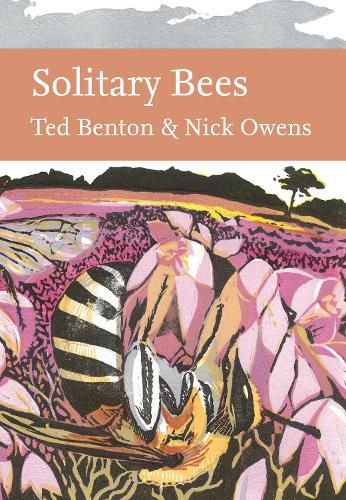Readings Newsletter
Become a Readings Member to make your shopping experience even easier.
Sign in or sign up for free!
You’re not far away from qualifying for FREE standard shipping within Australia
You’ve qualified for FREE standard shipping within Australia
The cart is loading…






A completely up to date introduction to the commonest group of bees in Britain.
Bees, for most people mean honey or bumble bees. In fact, the honey bees and bumblebees make up only a small proportion of the bee species that live in Britain, while the other bees are the great majority (230 or more species). Now it is recognised that these other bees play an important role in the pollination of crops and wild flowering plants. This has prompted much new research. A shift to gardening for wildlife has brought the solitary bees into sharper relief: many people now recognise mining bees, leaf-cutters and mason bees in their gardens, and even provide ‘bee hotels’ for them.
This book draws on the great wave of new knowledge to give a wonderful insight into the complicated lives of solitary bees. The main focus is on the wonderful fascination and complexity in the behaviour and ecology of this remarkable group of insects. It uses many of the authors own observations alongside the studies provided by others, to discover the numerous strategies used by male bees to find females and persuade them to mate. It follows the females in their search for a place to make their nest, and their gathering of materials - symmetrical sections of leaves, mud, chewed-up leaf fragments, plant hair or resin - to make the cells into which they place a store of nectar and pollen and lay a single egg. We watch them sealing up the nest, securing it until the following year when the new generation appears. We explore the interactions between flowering plants and their bee visitors, asking what the plants get from the relationship, as well as how the bees select the plants they visit, and the ingenuity required to extract pollen, nectar and other rewards. Finally, we look at the places where bees flourish, highlighting what can be done to encourage bees and thus ensure they continue to pollinate our flowers and crops.
$9.00 standard shipping within Australia
FREE standard shipping within Australia for orders over $100.00
Express & International shipping calculated at checkout
A completely up to date introduction to the commonest group of bees in Britain.
Bees, for most people mean honey or bumble bees. In fact, the honey bees and bumblebees make up only a small proportion of the bee species that live in Britain, while the other bees are the great majority (230 or more species). Now it is recognised that these other bees play an important role in the pollination of crops and wild flowering plants. This has prompted much new research. A shift to gardening for wildlife has brought the solitary bees into sharper relief: many people now recognise mining bees, leaf-cutters and mason bees in their gardens, and even provide ‘bee hotels’ for them.
This book draws on the great wave of new knowledge to give a wonderful insight into the complicated lives of solitary bees. The main focus is on the wonderful fascination and complexity in the behaviour and ecology of this remarkable group of insects. It uses many of the authors own observations alongside the studies provided by others, to discover the numerous strategies used by male bees to find females and persuade them to mate. It follows the females in their search for a place to make their nest, and their gathering of materials - symmetrical sections of leaves, mud, chewed-up leaf fragments, plant hair or resin - to make the cells into which they place a store of nectar and pollen and lay a single egg. We watch them sealing up the nest, securing it until the following year when the new generation appears. We explore the interactions between flowering plants and their bee visitors, asking what the plants get from the relationship, as well as how the bees select the plants they visit, and the ingenuity required to extract pollen, nectar and other rewards. Finally, we look at the places where bees flourish, highlighting what can be done to encourage bees and thus ensure they continue to pollinate our flowers and crops.